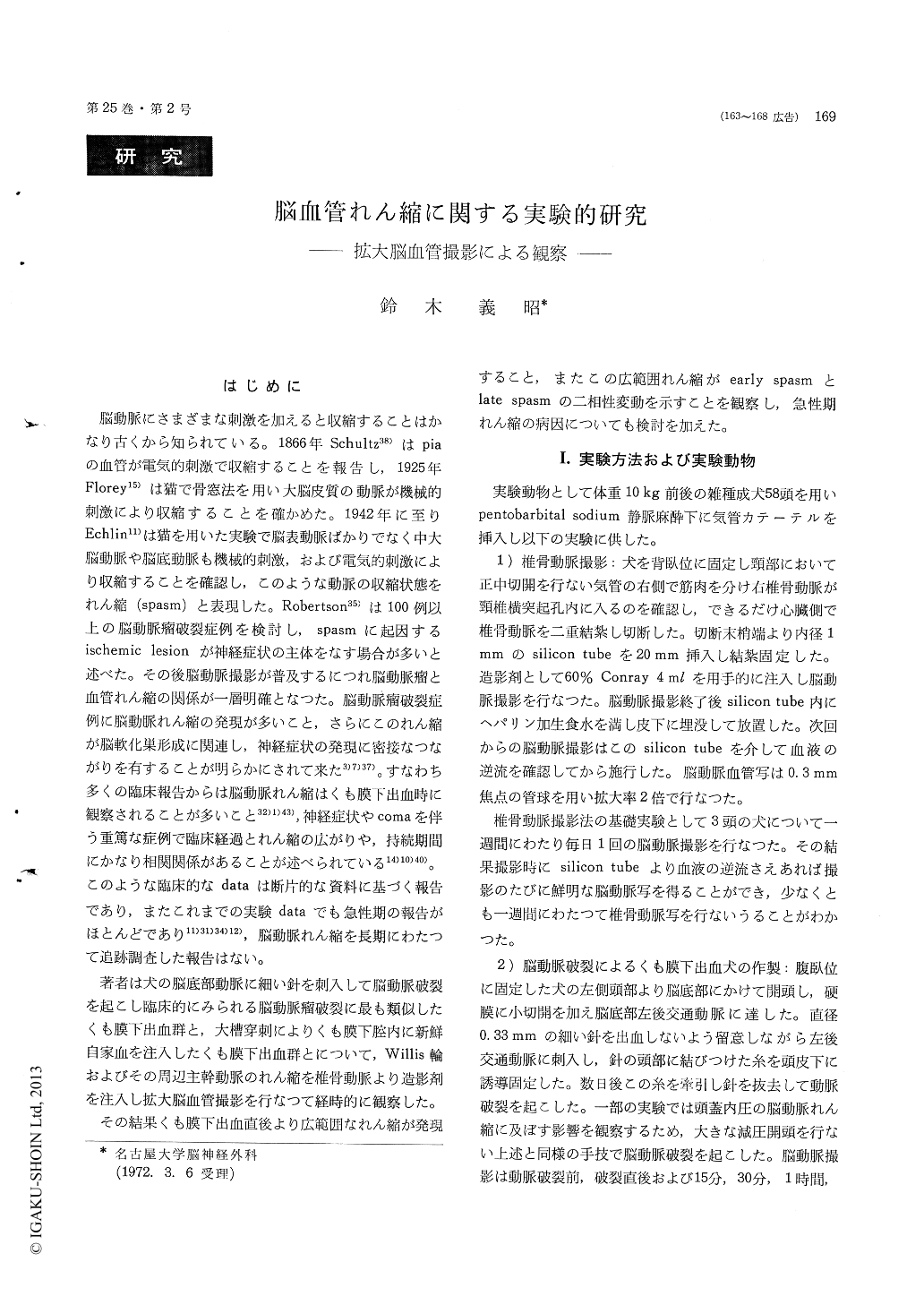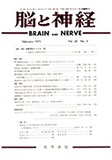Japanese
English
- 有料閲覧
- Abstract 文献概要
- 1ページ目 Look Inside
はじめに
脳動脈にさまざまな刺激を加えると収縮することはかなり古くから知られている。1866年Schultz38)はpiaの血管が電気的刺激で収縮することを報告し,1925年Florey15)は猫で骨窓法を用い大脳皮質の動脈が機械的刺激により収縮することを確かめた。1942年に至りEchlin11)は猫を用いた実験で脳表動脈ばかりでなく中大脳動脈や脳底動脈も機械的刺激,および電気的刺激により収縮することを確認し,このような動脈の収縮状態をれん縮(spasm)と表現した。Robertson35)は100例以上の脳動脈瘤破裂症例を検討し,spasmに起因するischemic lesionが神経症状の主体をなす場合が多いと述べた。その後脳動脈撮影が普及するにつれ脳動脈瘤と血管れん縮の関係が一層明確となった。脳動脈瘤破裂症例に脳動脈れん縮の発現が多いこと,さらにこのれん縮が脳軟化巣形成に関連し,神経症状の発現に密接なつながりを有することが明らかにされて来た3)7)37)。すなわち多くの臨床報告からは脳動脈れん縮はくも膜下出血時に観察されることが多いこと32)1)43),神経症状やcomaを伴う重篤な症例で臨床経過とれん縮の広がりや,持続期間にかなり相関関係があることが述べられている14)10)40)。このような臨床的なdataは断片的な資料に基づく報告であり,またこれまでの実験dataでも急性期の報告がほとんどであり11)31)34)12),脳動脈れん縮を長期にわたって追跡調査した報告はない。
著者は犬の脳底部動脈に細い針を刺入して脳動脈破裂を起こし臨床的にみられる脳動脈瘤破裂に最も類似したくも膜下出血群と,大槽穿刺によりくも膜下腔内に新鮮自家血を注入したくも膜下出血群とについて,Willis輪およびその周辺主幹動脈のれん縮を椎骨動脈より造影剤を注入し拡大脳血管撮影を行なって経時的に観察した。
The posterior communicating artery was punc-tured with a fine sewing needle (0.33 mm in dia-meter) without arterial bleeding which was left in place, and the dura was tightly closed. Two or three days later when the influence of the opera-tion was supposed to disappear, the needle was removed to let blood come out into the subarachnoid space.
Repeated magnified dangiography revealed diffuse marked spasm of the cerebral basal arteries immedia-tely after the rupture of the posterior communica-ting artery. Within one to two hours, however, the caliber of the arteries returned almost to the original size. After the restoration, the arteries became spastic again.
Marked swelling of the brain was encountered in more than two thirds of the experimental group. The uptake ratio of RISA in the swelling brain was always higher than that in the case of blood infusion into the subarachnoid space through the cisterns magna or in the normal brain.
To rule out brain swelling and excess of blood in the subarachnoid space as a cause of spasm, the dura was reopened to allow the blood to escape. Vasoconstriction which was marked at 15 minutes became less severe after this procedure.

Copyright © 1973, Igaku-Shoin Ltd. All rights reserved.


